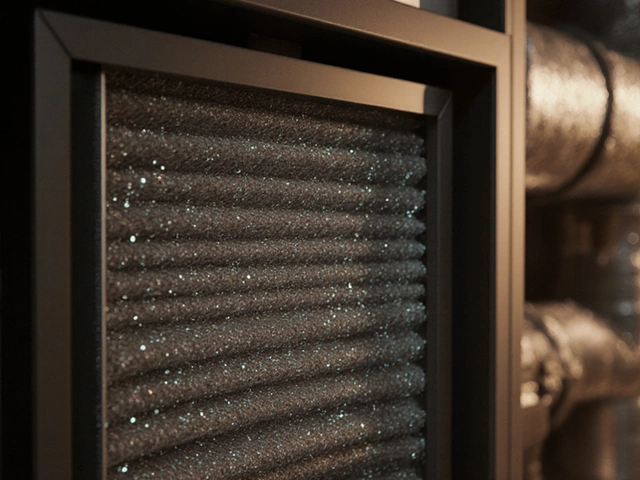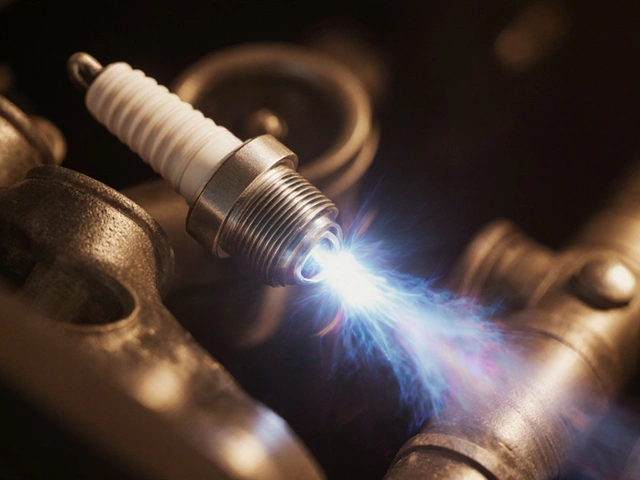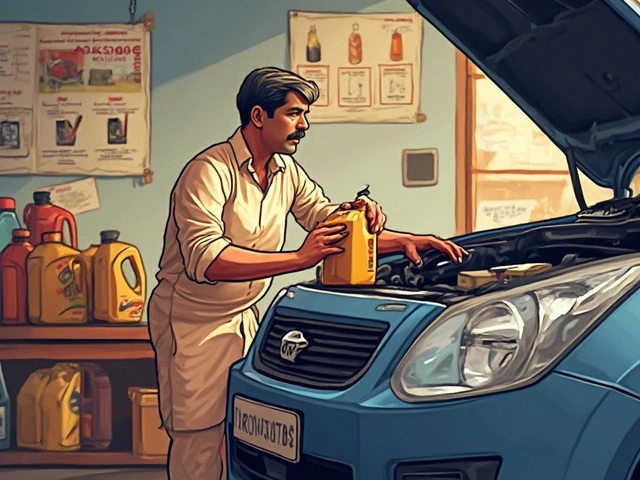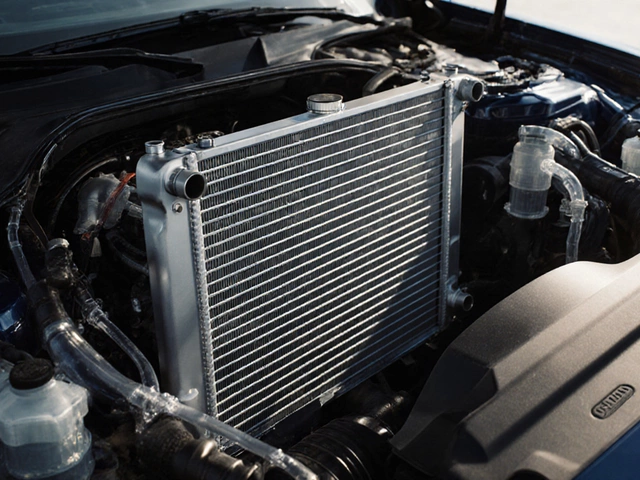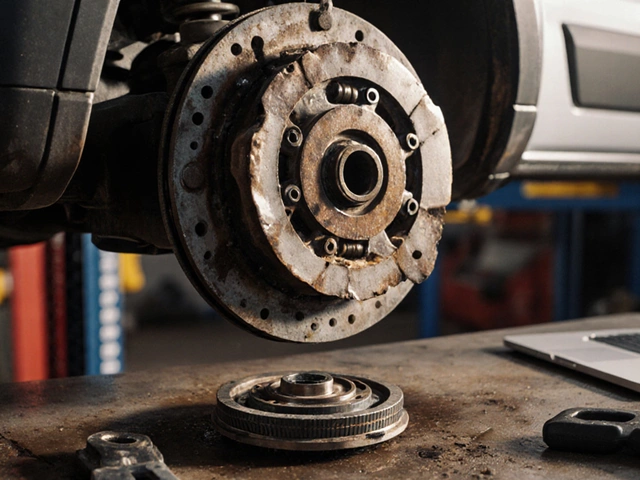
Clutch Replacement Cost Calculator
Clutch Replacement Cost Estimator
See how much it costs to replace your clutch based on your vehicle type and choice of repair method.
Replacing a clutch isn’t like changing a lightbulb. It’s not impossible, but it’s not something you should try on a Sunday afternoon while listening to podcasts. If you’re asking, is replacing a clutch easy? The honest answer is: no-not unless you’ve done it before, have the right tools, and know what you’re getting into.
Why Clutch Replacement Feels Overwhelming
Most people think clutches just wear out slowly, like brake pads. They don’t. A clutch is a mechanical handshake between your engine and wheels. When it fails, it doesn’t just slip a little-it stops working entirely. You might notice grinding when shifting, a spongy pedal, or the engine revving without the car moving. That’s not a warning light-it’s a breakdown waiting to happen. The real headache isn’t the clutch itself. It’s the access. To reach it, you need to pull the transmission. That means lifting the car, draining fluids, disconnecting the shifter, removing the starter, and unbolting the entire gearbox. On a front-wheel-drive car like a Ford Focus or Volkswagen Golf, you’re working in a cramped space with little room to breathe. On a rear-wheel-drive truck? You’re dealing with heavier parts and more complex linkages.What’s Actually in a Clutch Kit
A clutch kit isn’t just a disc. It’s a set of three key parts:- Clutch disc: The friction surface that connects engine to transmission. It wears down over time from heat and slip.
- Pressure plate: The spring-loaded clamp that squeezes the disc against the flywheel. If it’s weak or warped, the clutch won’t engage properly.
- Release bearing (throw-out bearing): The part that pushes against the pressure plate when you press the pedal. It’s often the first to fail from constant use.
Tools You Actually Need
You can’t do this with a socket set from the garage floor. Here’s what you need:- Transmission jack (not a regular jack-this holds the weight and lets you angle it out safely)
- Torque wrench (critical for reassembly-over-tightening bellhousing bolts can crack the case)
- Clutch alignment tool (a cheap plastic one works fine; no, you can’t use a screwdriver)
- Socket set with extended reach and universal joints
- Jack stands and wheel chocks (never rely on a jack alone)
- Drain pan for transmission fluid
- Penetrating oil (for stubborn bolts-rust is the real enemy here)
Time Investment: What to Expect
If you’ve never done this before, plan for a full weekend. Even experienced mechanics take 6-8 hours on average. On a 2018 Honda Civic? Maybe 5 hours. On a 2012 BMW 3 Series with a tight engine bay? 10 hours, easy. The longest part isn’t removing the clutch. It’s getting the transmission out and back in. You’re working blind in places. You’re fighting with bolts that have 15 years of rust on them. You’re trying to line up a 40-pound input shaft with a tiny splined hole while holding the transmission steady with one hand. And don’t forget reassembly. Torque specs matter. Tighten the pressure plate bolts in a star pattern, not in a circle. Over-torque them, and you’ll crack the plate. Under-torque, and it’ll come loose-probably while you’re driving.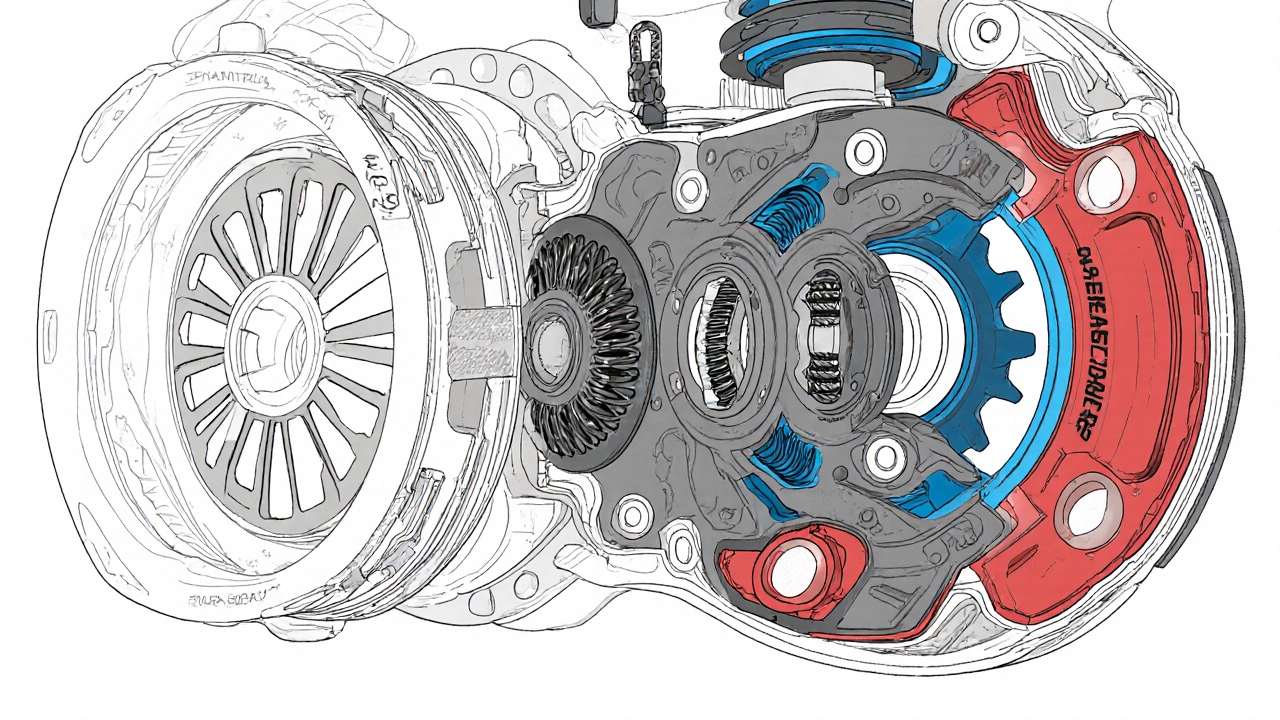
When It’s Worth Doing Yourself
There are times this job makes sense:- You’ve done other major repairs like timing belts or water pumps before.
- You have a lift or at least a sturdy jack and stands.
- You’re in a rural area with no trusted mechanics nearby.
- You’re buying a used manual car and want to replace the clutch before it fails.
When to Walk Away
Don’t attempt this if:- You’ve never worked under a car before.
- You don’t have a torque wrench.
- You’re doing it in a driveway with no lighting.
- Your car has a complex dual-mass flywheel (common in diesel models).
What Happens If You Skip the Flywheel Inspection
Most people replace the clutch disc and pressure plate but leave the flywheel alone. Bad idea. The flywheel is the surface the clutch presses against. If it’s worn, cracked, or glazed, the new clutch won’t grip properly. You’ll get slipping, burning smells, and premature failure. Check it. Look for deep grooves, blue discoloration (sign of overheating), or cracks around the bolt holes. If it’s smooth and clean, you can resurface it. If it’s damaged, replace it. Resurfacing costs £60-£100 at a machine shop. A new one? £200-£500 depending on the car.
How to Know You Did It Right
After you’ve put everything back together:- Fill the transmission with the correct fluid (check your manual-some use gear oil, others use special ATF).
- Start the car with the clutch pedal pressed. Listen for grinding or unusual noises.
- Test in first gear. The engagement should be smooth, not jerky.
- Drive slowly. Let the clutch bed in for the first 50 miles. Don’t race it or ride the pedal.
Clutch Lifespan: What to Expect
A well-installed clutch in a daily driver lasts 80,000-120,000 miles. In a performance car or heavy-towing truck? Maybe 40,000. In a city commuter who rides the clutch? 20,000. The biggest killer? Holding the clutch halfway down at traffic lights. That’s not "being careful." That’s wearing it out faster. Always put the car in neutral and release the pedal when stopped.What’s the Best Clutch Kit?
There’s no one-size-fits-all. For a daily driver, stick with OEM-equivalent kits from reputable brands like LUK, Sachs, or Valeo. They’re built to factory specs and come with warranties. If you’re modifying your car for performance, you might consider a heavy-duty kit from Exedy or ACT. But these are stiffer, noisier, and harder to drive in traffic. They’re for track days, not school runs. Avoid no-name brands from eBay or Amazon. They might be cheap, but they often use inferior friction materials. I’ve seen them fail in under 5,000 miles.Final Answer: Is Replacing a Clutch Easy?
No. It’s not easy. But it’s doable-if you’re prepared. It’s a job for someone who doesn’t mind getting dirty, who has the right tools, and who understands that this isn’t a weekend project. It’s a weekend project with a lot of stress, a lot of lifting, and a lot of things that can go wrong. If you’re not confident, pay the £600-£800 for a professional. You’ll get it done right, in one day, with a warranty. And you won’t end up stranded on the M5 with a broken transmission because you skipped the alignment tool. The clutch isn’t the expensive part. The mistake is.Can I replace a clutch without removing the transmission?
No. The clutch is sandwiched between the engine and the transmission. To access it, you must separate those two components. There are no shortcuts. Even on cars with front-mounted engines, the transmission must be pulled back to clear the clutch assembly. Some people try to slide the transmission out without a jack, but that risks damaging the input shaft or spilling fluid everywhere.
How long does a clutch last after replacement?
A properly installed clutch in a standard car lasts between 80,000 and 120,000 miles. If you drive in stop-and-go traffic, tow heavy loads, or ride the clutch pedal, it could wear out in under 50,000 miles. Using a high-quality kit and following break-in procedures helps extend life.
Do I need to replace the flywheel when replacing the clutch?
Not always, but you should inspect it. If the flywheel has grooves, cracks, or a blue tint from overheating, replace it. A worn flywheel will cause the new clutch to slip or chatter. Resurfacing is cheaper than replacement, but some dual-mass flywheels can’t be resurfaced-only replaced.
Is a clutch kit all I need?
Most kits include the clutch disc, pressure plate, and release bearing. But you might also need a pilot bearing, alignment tool, or new transmission input shaft seal. Always check the product details before buying. Some kits are sold as "complete" but still exclude critical parts.
Can I drive with a bad clutch?
You might be able to, but you shouldn’t. A slipping clutch puts extra strain on the engine and transmission. If the clutch is completely gone, you won’t be able to shift gears. Driving with a bad clutch can lead to transmission damage, which costs far more to fix than a clutch replacement.
